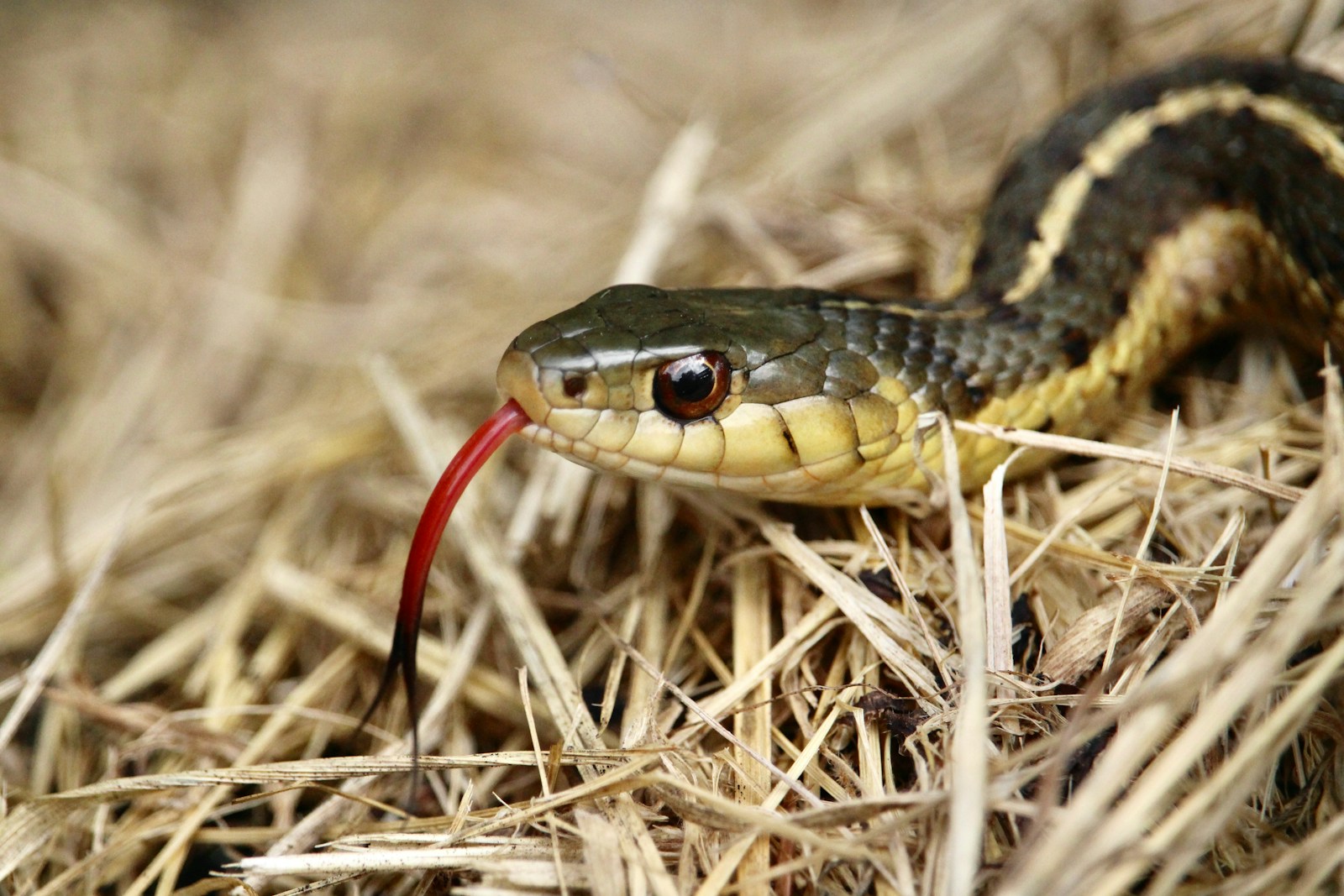For many first-time snake owners, activity level is an important consideration when choosing the perfect reptilian companion. While snakes are often stereotyped as sedentary creatures that spend most of their time hiding or sleeping, several species display surprising levels of energy, curiosity, and engagement with their environment. These more active snakes can provide fascinating observation opportunities and more interactive pet experiences compared to their less mobile counterparts. Understanding which snake breeds tend to be more active can help potential owners match their expectations with the right species, ensuring a rewarding relationship with their scaly friend. This article explores some of the most active snake breeds commonly kept as pets, their behavior patterns, and what makes them particularly dynamic reptilian companions.
Corn Snakes: The Energetic Starter Snake
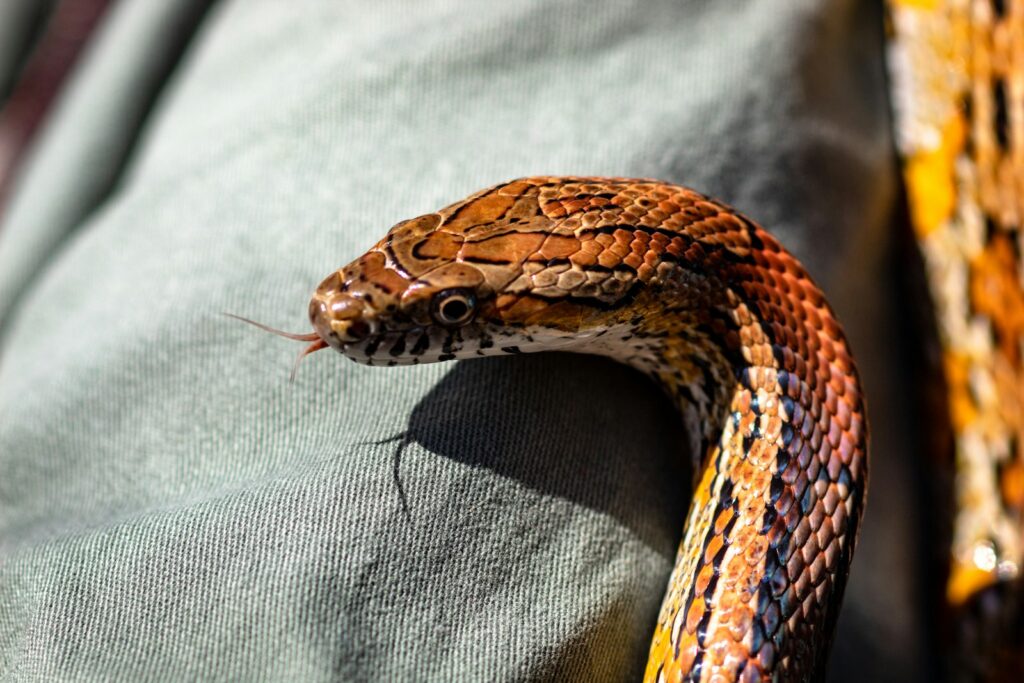
Corn snakes (Pantherophis guttatus) rank among the most popular beginner snakes partly due to their moderate but engaging activity levels. These North American colubrids are known for their exploratory nature, frequently climbing, burrowing, and investigating new elements in their enclosures, especially during dawn and dusk when they’re most active. A healthy corn snake will regularly be seen moving throughout its habitat, shifting between hiding spots, and actively tongue-flicking to gather information about its surroundings. Their curious temperament makes them fascinating to observe, as they’ll often approach the glass when their owners are nearby, seeming to display interest in activities outside their enclosure. Unlike some species that remain hidden most of the time, corn snakes strike an appealing balance between restful periods and active exploration.
Garter Snakes: Naturally Active Daytime Hunters

Garter snakes (Thamnophis species) stand out among pet snakes for being primarily diurnal, meaning they’re most active during daylight hours when owners are typically awake to observe them. In the wild, these slender, quick-moving reptiles are active hunters that pursue prey rather than ambushing it, a behavior that translates to captivity where they remain quite mobile and alert. Owners often report their garter snakes actively patrolling their enclosures throughout the day, frequently swimming if provided with a water feature, and demonstrating complex foraging behaviors. Their higher metabolism compared to many other snake species means they’re frequently on the move, making them excellent choices for owners who want to regularly observe their pet in action. These snakes also acclimatize well to human presence and may even become more active when their owner enters the room, suggesting a level of environmental awareness uncommon in many reptiles.
Rat Snakes: The Avid Climbers
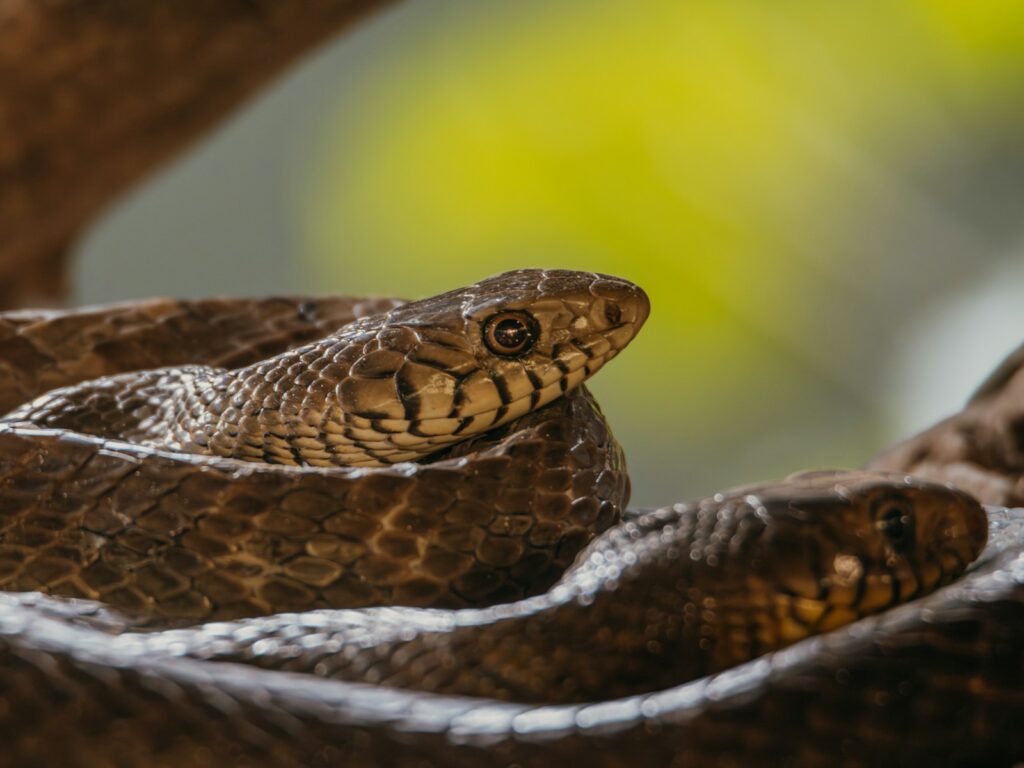
The rat snake group, including species like the black rat snake and Texas rat snake, comprises some of the most athletically inclined serpents in the pet trade. These powerful constrictors are exceptional climbers, frequently scaling vertical surfaces in search of birds and eggs in the wild—a behavior they enthusiastically continue in captivity when provided with appropriate climbing structures. Rat snake owners often find their pets actively exploring the upper reaches of their enclosures, utilizing branches, shelves, and other elevated features with impressive agility. Their searching behavior is particularly pronounced around feeding time, when they may become notably more active and alert, tongue-flicking rapidly and moving with purpose. Due to their semi-arboreal nature, rat snakes require more vertical space than many ground-dwelling species, allowing them to express their natural climbing behaviors that make them such dynamic pets.
King Snakes: Constant Foragers
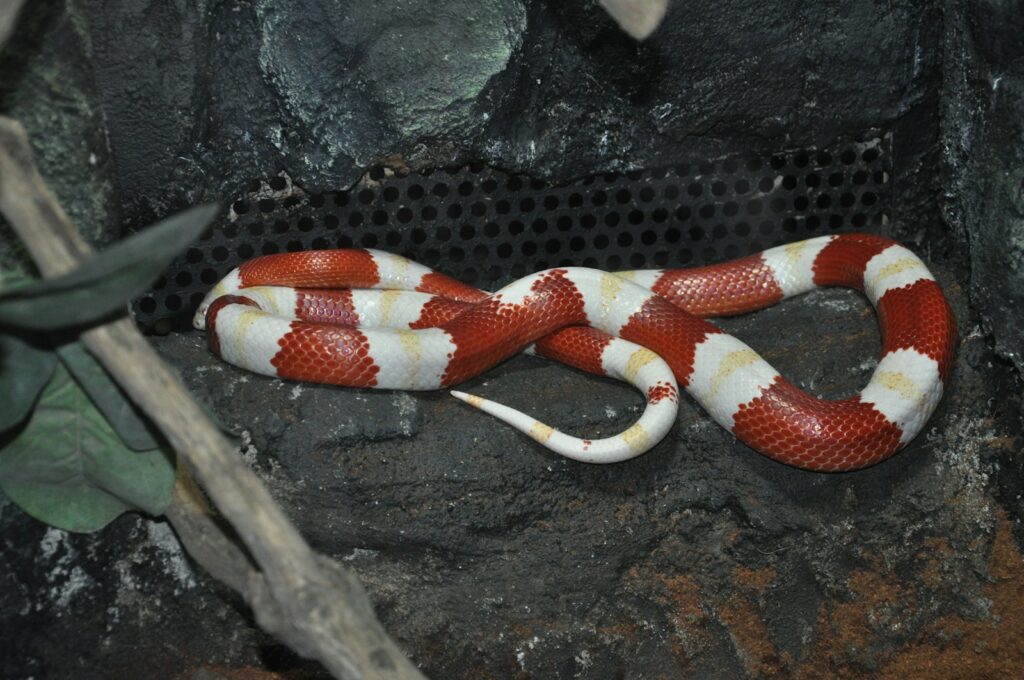
King snakes (Lampropeltis species) have earned their reputation as some of the most active hunters in the snake world, a trait that translates to their behavior as pets. These ophiophagous (snake-eating) reptiles possess a naturally high food drive and spend significant time actively searching their environment for potential meals. Even when not hungry, king snakes often display curious behavior, investigating every corner of their enclosure and responding quickly to environmental changes or new stimuli. Their heightened awareness and responsiveness make them particularly engaging pets that seem to take genuine interest in their surroundings. King snake owners frequently notice their pets’ alert posture and attentive behavior when nearby, creating a sense of connection unusual for reptilian companions. Their bold temperament and willingness to explore make them standout choices for enthusiasts seeking a more interactive snake experience.
Rough Green Snakes: Daytime Tree Dwellers
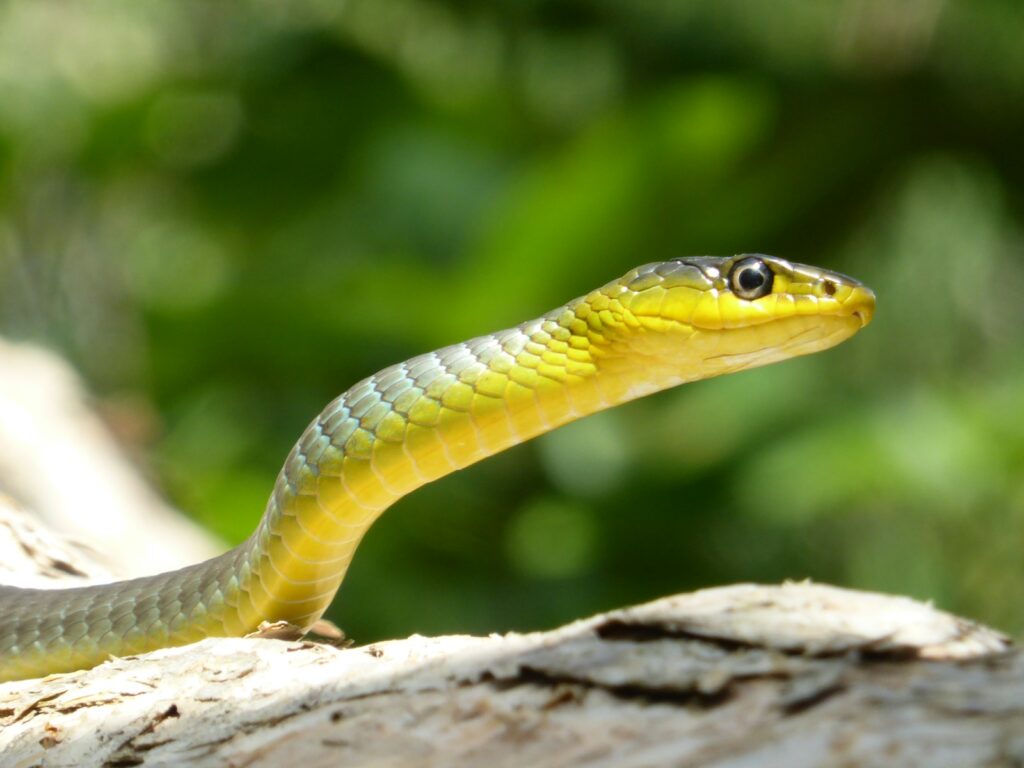
For those seeking a visually striking and consistently active pet snake, the Rough Green Snake (Opheodrys aestivus) offers a distinctive experience. These slender, bright green arboreal snakes spend the majority of their waking hours actively moving through vegetation, a behavior they maintain in captivity when provided with appropriate climbing structures and foliage. Unlike many nocturnal snake species, rough green snakes are primarily diurnal, meaning their peak activity periods align with human schedules, allowing owners to regularly observe their natural behaviors. Their specialized diet of insects rather than rodents means they hunt differently than many common pet snakes, often stalking their prey with deliberate movements and quick strikes. Although they require more specialized care than some beginner species, their constant daytime activity and graceful movements make them fascinating subjects for observation.
Hognose Snakes: The Theatrical Performers
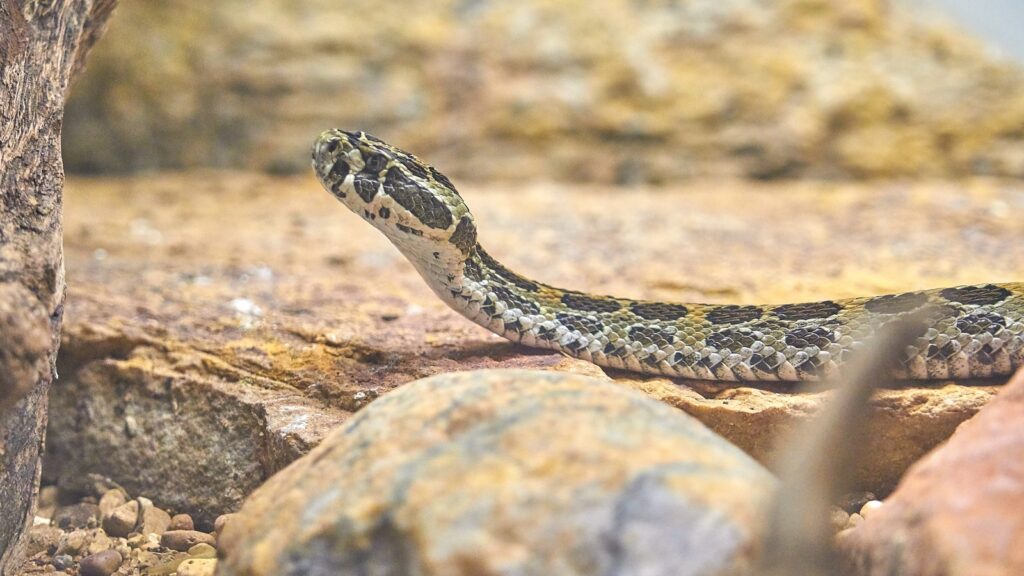
Western Hognose snakes (Heterodon nasicus) combine moderate activity levels with extraordinarily expressive behaviors that make them seem perpetually engaged with their environment. These charismatic snakes are known for their unique hunting adaptations—including their upturned snouts used for digging and burrowing—which they employ frequently in captivity, creating constant movement in substrate as they explore. What truly sets hognose snakes apart is their remarkable defensive display when startled or uncertain: they may flatten their necks cobra-style, hiss dramatically, strike with closed mouths, or even perform an elaborate death-feigning routine where they roll onto their backs with mouths agape. While not as consistently mobile as some species, this theatrical behavior creates an impression of high activity and engagement that many owners find endlessly entertaining. Their inquisitive nature and tendency to “periscope” (raise their heads to survey their surroundings) further contributes to their reputation as active, engaging pets.
Gopher Snakes: Powerful Ground Movers
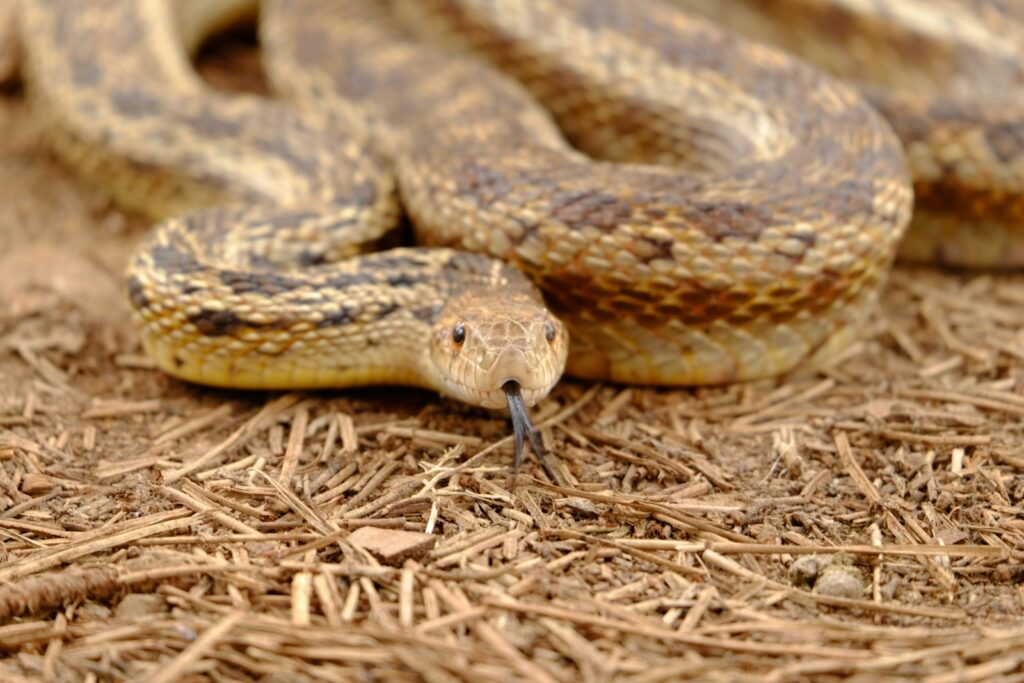
Gopher snakes (Pituophis catenifer) and their close relatives like bull snakes are known for their substantial size and incredible strength, which they use to navigate their environment with surprising vigor. These heavy-bodied constrictors are primarily terrestrial but display remarkable activity levels, particularly in larger enclosures where they can fully express their natural behaviors. Gopher snakes are powerful burrowers that regularly rearrange their substrate, creating an ever-changing landscape within their habitat that reflects their active nature. Owners often observe these snakes methodically patrolling the perimeter of their enclosures, pressing against the walls and exploring every inch of available space with determined focus. Their heightened metabolism compared to similar-sized pythons or boas means they’re more frequently on the move, making them ideal for enthusiasts who appreciate observing natural snake behaviors. Their confident demeanor and consistent activity make them particularly rewarding for owners who spend time near their enclosures.
Rosy Boas: Surprisingly Active Small Constrictors
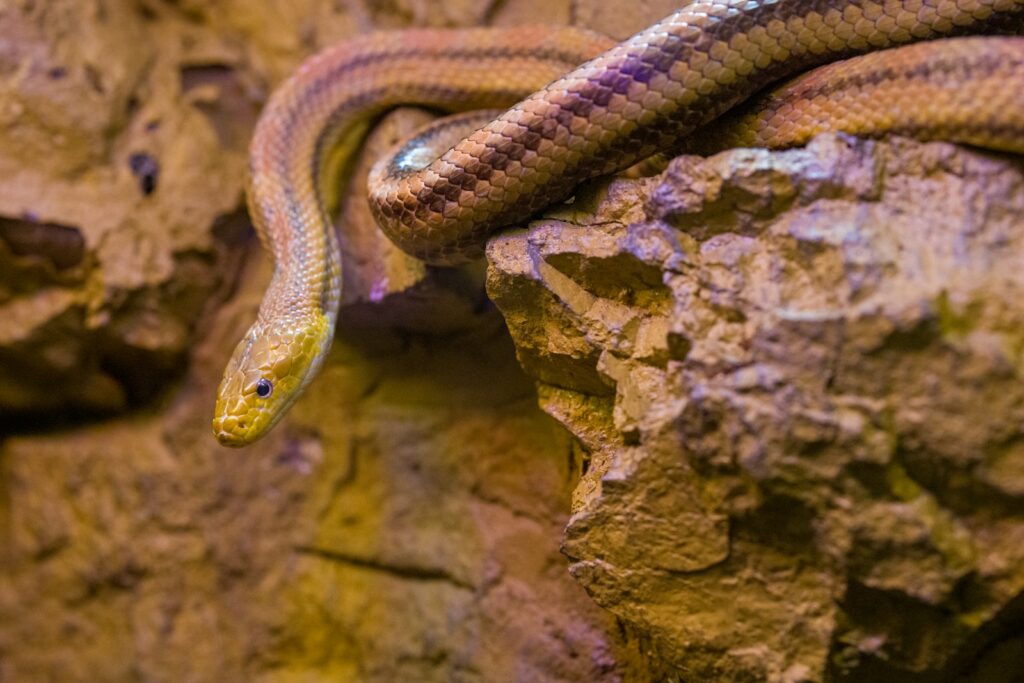
Rosy boas (Lichanura trivirgata) often surprise new owners with their relatively high activity levels compared to other similarly sized boid snakes. Despite their stocky build and reputation for docility, these small North American constrictors demonstrate consistent exploratory behavior, especially during evening hours when they naturally become more active. Rosy boa owners frequently report their pets actively cruising their enclosures, investigating hiding spots, and showing particular interest in new scents or objects introduced to their environment. Their natural curiosity is especially evident during feeding response, when they display remarkable alertness and purposeful movement as they track prey items. Though they do enjoy secure hiding spots and will spend time concealed, rosies typically emerge regularly to explore, making them more visible and interactive than many other boid species of similar size. Their manageable adult size combined with their active nature makes them excellent choices for enthusiasts seeking a more dynamic small constrictor.
Ribbon Snakes: The Aquatic Acrobats
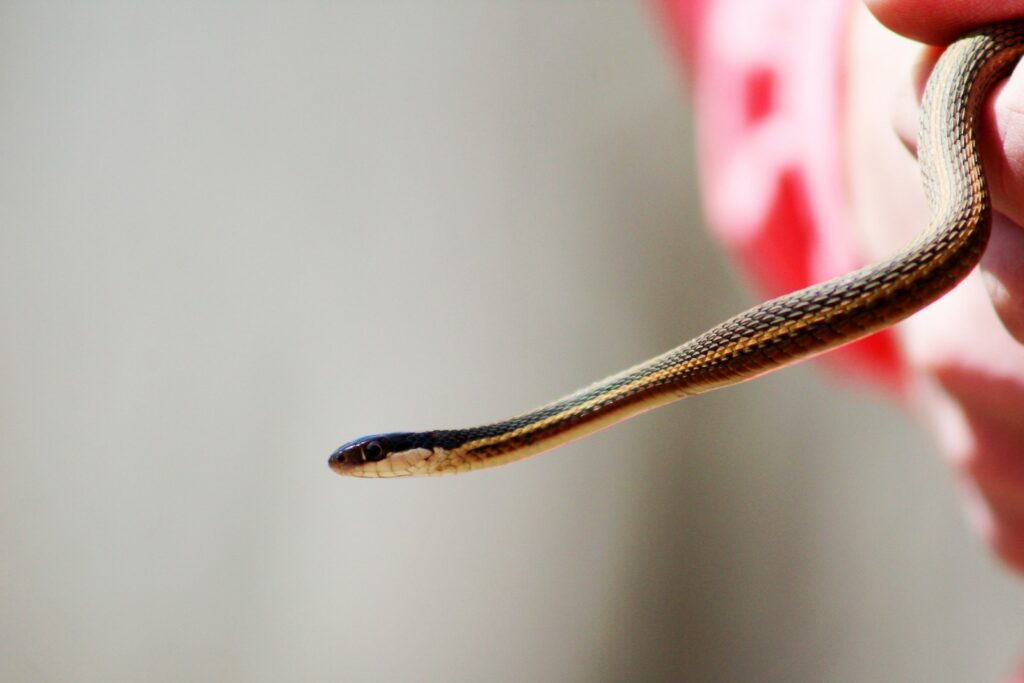
Ribbon snakes (Thamnophis saurita), close relatives of garter snakes, display some of the most constant activity among commonly kept pet snake species, particularly when provided with semi-aquatic habitats. These slender, agile snakes are natural swimmers that spend significant time actively patrolling the water features in their enclosures, showcasing impressive aquatic agility as they hunt for small fish and amphibians. Unlike many reptiles that move primarily to thermoregulate or hunt, ribbon snakes seem to enjoy exploration for its own sake, constantly moving between land and water areas with apparent enthusiasm. Their higher metabolism requires them to feed more frequently than many larger snake species, contributing to their regular active periods as they search for food. When properly accommodated with swimming opportunities, climbing branches, and adequate temperature gradients, ribbon snakes provide nearly constant movement and behavioral displays that make them favorites among keepers who prefer highly active reptilian pets.
Water Snakes: Dynamic Aquatic Specialists
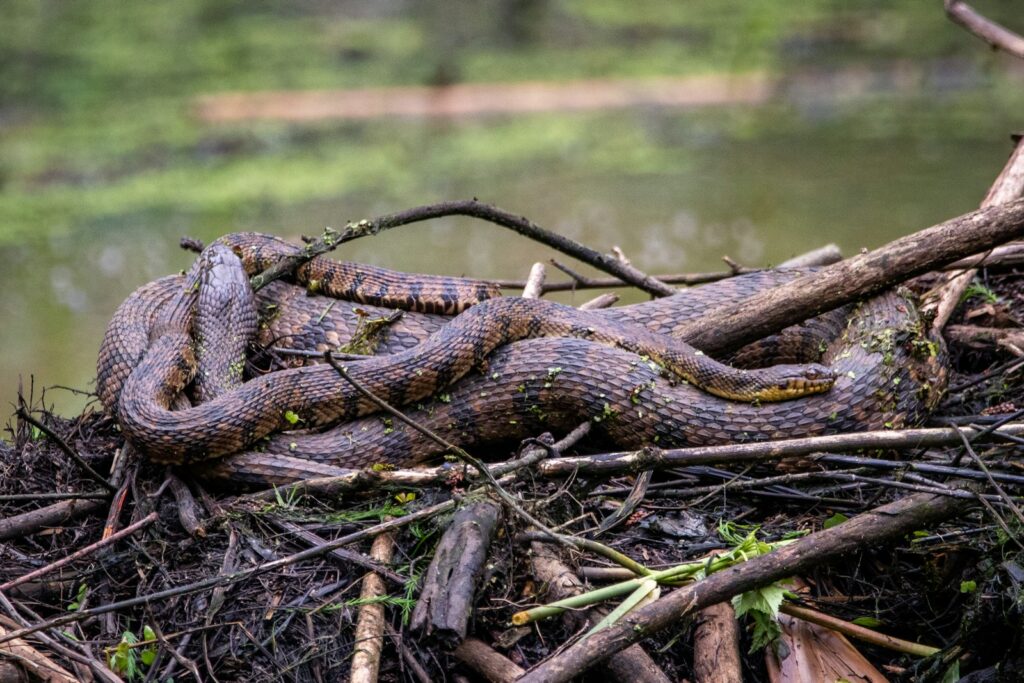
Northern Water Snakes (Nerodia sipedon) and their relatives represent some of the most consistently active snake species in captivity when provided with appropriate semi-aquatic setups. These specialized hunters demonstrate remarkable agility both in water and on land, regularly transitioning between the two environments with fluid grace that showcases their natural adaptations. Water snake owners frequently observe their pets actively swimming, diving, and patrolling underwater features with surprising endurance, sometimes remaining active for hours at a time. Their heightened metabolism and specialized hunting strategies for capturing fish and amphibians translate to more frequent feeding schedules and correspondingly higher activity levels than many terrestrial species. While they have a reputation for being more defensive than some common pet snakes, captive-bred specimens often become quite tolerant of human presence and may even increase their activity when their keeper approaches, anticipating interaction or feeding. Their dynamic behavior and specialized aquatic adaptations make them fascinating subjects for naturalistic vivaria where their full behavioral repertoire can be observed.
Ringneck Snakes: Small But Mighty Explorers
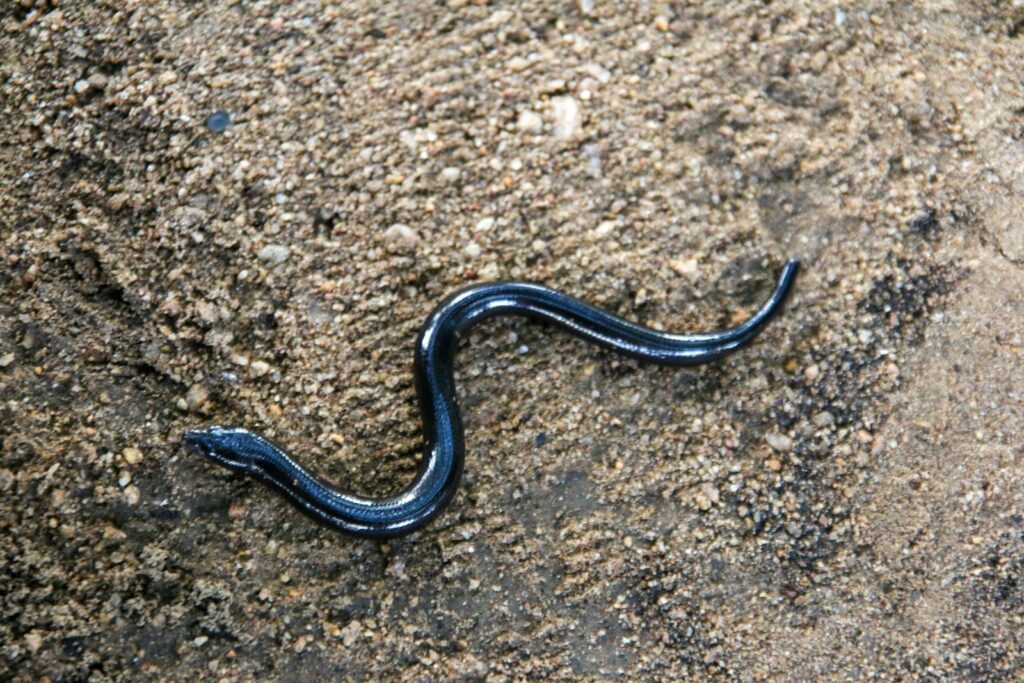
Despite their diminutive size, Ringneck Snakes (Diadophis punctatus) display surprising levels of activity that belie their small stature. These secretive yet curious serpents spend considerable time exploring their environments, particularly during dawn and dusk hours when they naturally emerge to hunt for small invertebrates. Ringneck snake keepers often notice their pets constantly investigating substrate, penetrating loose soil with their pointed snouts, and methodically searching leaf litter for potential prey items. Their specialized diet of salamanders, earthworms, and other small invertebrates means they evolved as active hunters rather than ambush predators, resulting in more consistent movement patterns. While they do appreciate security and will utilize hiding spots frequently, properly acclimated specimens regularly emerge to patrol their territories even when human observers are present. Their manageable size, distinctive appearance with bright ventral coloration, and surprisingly engaging behavior make them increasingly popular choices for enthusiasts interested in keeping and observing less common snake species.
Factors Affecting Snake Activity Levels
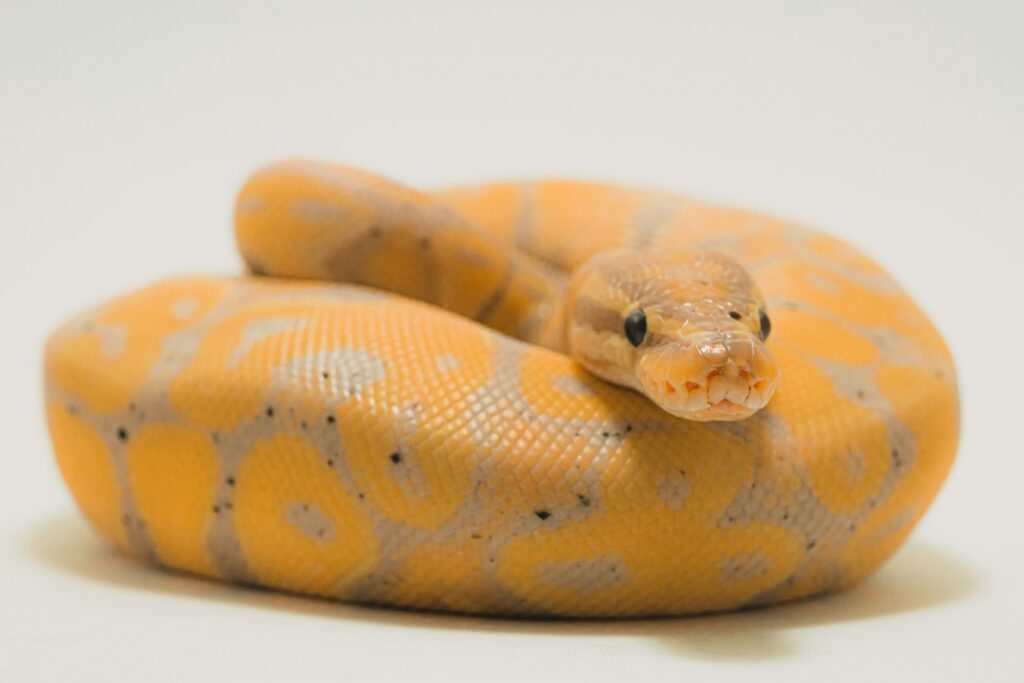
While certain species tend toward higher activity levels, various factors can significantly influence individual behavior regardless of breed. Environmental temperature plays perhaps the most crucial role, as snakes require appropriate thermal gradients to properly regulate their metabolism and energy expenditure; too cold, and they become lethargic, while optimal temperatures promote natural behavior patterns. Enclosure size and complexity dramatically impact observable activity, with larger, more naturalistic habitats generally encouraging snakes to express their full behavioral repertoire compared to minimalist setups. Feeding schedules also influence activity patterns, with many species showing increased movement during pre-feeding periods when they’re actively hunting or searching for food. Individual temperament varies widely even within species, with some specimens naturally more bold and exploratory than others regardless of breed reputation. Finally, age and reproductive status affect activity, with juvenile snakes often displaying higher energy levels than adults, and breeding season triggering increased movement and searching behaviors in sexually mature specimens.
Creating Environments That Encourage Activity
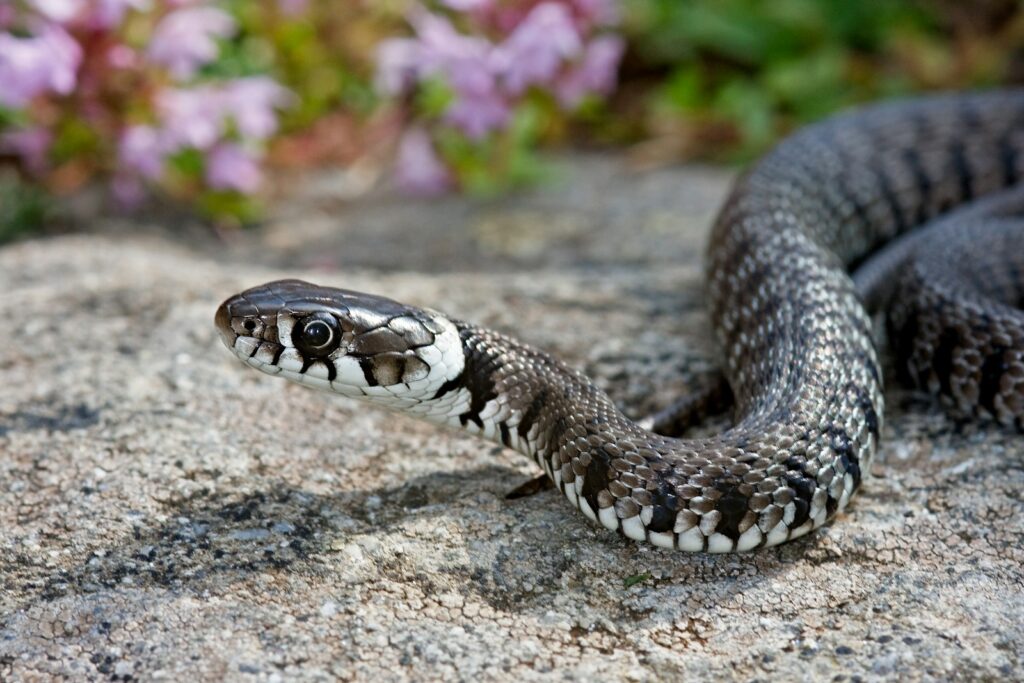
To truly appreciate the dynamic nature of active snake species, owners must provide environments that encourage natural behaviors rather than suppress them. Adequate space represents the most fundamental requirement, with enclosures significantly larger than minimum recommendations allowing snakes to fully express their movement patterns and territorial behaviors. Thermal gradients with properly positioned heat sources enable snakes to thermoregulate naturally, moving between temperature zones as they would in the wild, which creates observable activity. Structural complexity including multiple hiding locations, climbing opportunities for arboreal species, burrowing substrate for terrestrial species, and water features for semi-aquatic species all promote species-appropriate behaviors that make snake-keeping more rewarding. Enrichment activities such as rearranging decor periodically, introducing novel scents (excluding harmful chemicals), or occasionally placing food items in different locations can stimulate exploratory behavior even in typically sedentary species. Finally, establishing predictable keeper routines that snakes can acclimate to helps reduce stress-related hiding and allows pets to display their natural behaviors even when owners are present to observe them.
Understanding the natural activity levels and behavioral patterns of different snake species helps prospective owners select pets that match their expectations and observation preferences. While even the most active snake species still spend significant time resting compared to mammalian pets, the species highlighted in this article demonstrate that snakes can be far more dynamic and engaging than their reputation suggests. By selecting naturally active species and providing environments that encourage their full behavioral repertoire, snake enthusiasts can enjoy fascinating displays of natural behavior that connect us to these remarkable reptiles’ evolutionary adaptations and unique place in the animal kingdom. Whether climbing, swimming, burrowing or hunting, active snake species offer windows into a world of reptilian behavior that continues to captivate dedicated keepers worldwide.

